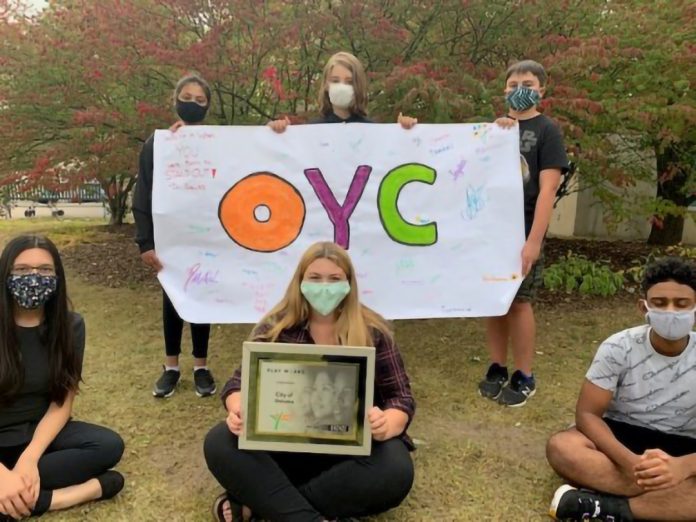For the fifth consecutive year, Trent University Durham’s Child and Youth Studies program is working with the City of Oshawa to bring positive change to the Oshawa Youth Council (OYC).
The OYC was originally created in 2011 and its purpose is to provide youth in Oshawa with a voice in their community and to help organize and run events within the city. Currently, the council holds meetings once a month on Zoom, which provides its members with community service hours.
This collaboration is part of the TeachingCity Oshawa partnership, where the city looks to gain knowledge and perspective from youth through education.
This year, students are looking to divide the OYC into two new councils based on the members and their age.
The OYC is made up of students from Grade 5 to Grade 12, and this has made presenting ideas challenging. Aili Oberson, programs and facilities manager for the City of Oshawa, thinks splitting the OYC into junior and senior councils will be beneficial for present and future members.
“Their reasons are different for why they’re on the council, so I think if we can get to a point where we have it segmented by age, I think the value for the members will increase,” says Oberson. “We’re hoping to extend the upper age so that we can engage post-secondary students as well. This is an age group that we have a difficult time with engaging and participating with.”
Oberson says the students at Trent have been asked to answer several challenge questions about the OYC and the city in general.
Two of the challenge questions are: What platform is appropriate for communicating with youth in Oshawa? How can the city move forward with exploring social media with youth?
These questions are part of TeachingCity’s experiential learning initiative CityIdeaLab and are designed to make the students think about an issue the city is facing and use what they are learning in the class to provide solutions.
According to Oberson, students have met with city workers virtually this year and presented their ideas over Zoom. She says the students are providing an easy solution for some of the communication issues the city has had with youth around Oshawa.
“This has been a challenge for many municipalities because we’re a little old-fashioned and one of the recommendations from Trent was for OYC to have their own Instagram page,” says Oberson.
Overall, Oberson says she’s very happy with this partnership.
“The collaboration with Trent is beneficial because it allows our city staff to see the youth perspective. It allows us to work with students for a semester and it allows them to see how municipal work gets done,” says Oberson.
Child and Youth Studies program coordinator Alba Agostino says she’s been very pleased with how engaged the city staff has been with Trent students. While this year’s collaboration is virtual, Agostino still feels the students have benefitted greatly.
“It’s provided our students with opportunities that I don’t think they would’ve otherwise had. The best benefit for our students has been the access to city staff,” says Agostino. “It really is a community problem-solving experience with guidance from city experts.”
She also feels like this has given students the opportunity to apply their in-class learning to real-life issues.
According to Agostino, this collaboration has evolved over the years. In previous instances, students would focus on issues within the city and only dissect what the actual problems were.
Currently, the Child and Youth Studies program is focused on implementing ideas and solutions for problems that currently exist.
Agostino has had a positive outlook on virtual teaching, and she says the students wouldn’t have had the amount of access they had to city workers in a regular school environment.
“The interaction with the city staff is the difference between working in a classroom versus remotely like they are this year. I don’t think they would’ve gotten this opportunity if they were in a classroom,” says Agostino.
Another city worker who thinks this collaboration between TeachingCity and Trent is beneficial is Julie MacIsaac, the director of innovation and transformation for the City of Oshawa.
“I think it’s a great idea because the students in the Child and Youth Studies program are studying to work with children in the future. I think this really gives them work-integrated learning,” says MacIsaac. “From a city side, it really gives us different ideas because we do the same thing over and over again. We know we’ve got great minds in our backyard, so this will provide us with really good ideas moving forward.”
MacIsaac welcomed the idea of youth and post-secondary students having a real voice in city-wide issues.
As for the future of this year’s collaboration, Agostino says students are still presenting their ideas and she feels confident that the re-shaping of the OYC will eventually happen.
“This collaboration is really guiding students towards making some change,” says Agostino.”I’m really confident that in the long run, this will result in some tangible change.”




